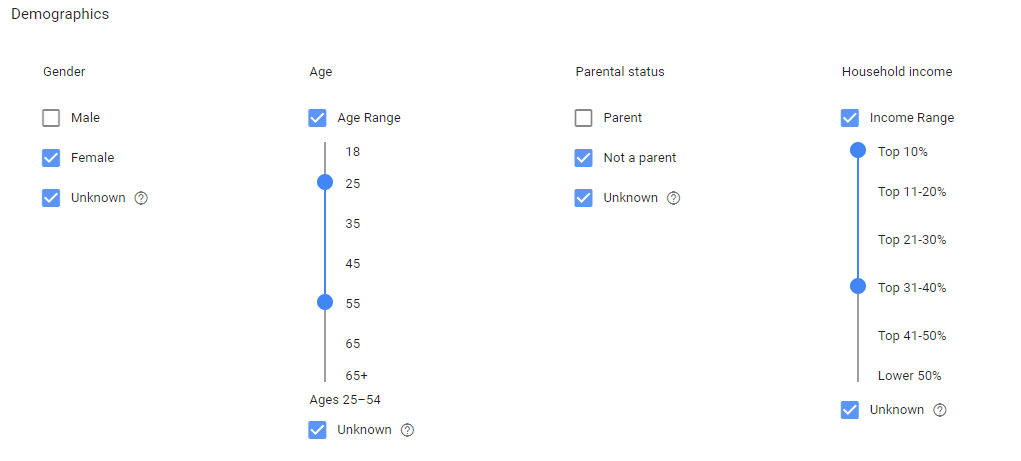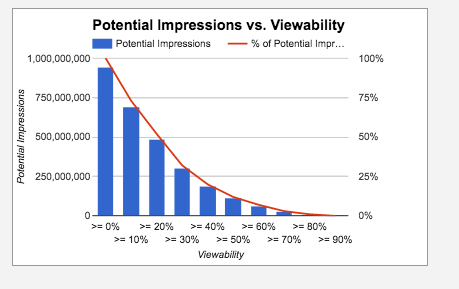You’re in your favourite demand-side platform (DSP). You’ve set up your campaign, your insertion orders, and your line items. You’ve got a shiny new budget to work with, and it’s going to get great results - you’ve got all the research from previous campaigns to back it up.
You check back - it’s spent 34p over the last three days, despite having a £200 budget to spend every day.
Normally, you’d panic; “this is spending so little it’s almost like a bad analogy used to start a blog post about why my ads are under pacing.” Not this time. No, this time you’ve got five top tips from SearchStar to help you out.
What could be the problem? Let us help you. We’ve identified the five most common reasons why your ads are under pacing. Here they are, and how to correct them.
Using Demographic Targeting Without Including Unknown
Why?
Specific demographic targeting is great; it lets you speak to exactly who you want to. Due to data privacy reasons however, demographic data can be limited.
By not including people of unknown age, gender or other demographics, you’re excluding large portions of your potential audience and not getting the scale you need to spend more than 34p over three days.
How do I fix it?
If you don’t desperately need to show every single impression to a very select demographic, start including “unknown” in your demographic targeting.
Your ads may show to some people outside of your target demographics, but they’ll still be within your wider targeting. More impressions to the right audience.

Targeting Very High Viewability with Active View
Why?
Everyone wants their ads to be seen. If an ad serves in the forest and there’s no one to see it, did it serve at all? Doesn’t matter, no-one is converting from it.
That being said, targeting viewability excludes a huge amount of inventory. Targeting 60% viewability excludes 95% (!) of available inventory, which will definitely hinder your scale.
How do I fix it?
This isn’t a quick fix, but it’s the best solution. Duplicate your line items, and adjust the viewability settings on each one. These can be as incremental as you’d like, but more data is always useful. It can be just one line item, or all of them. It’s your research (and time), you can test what you want to.
Give it enough time to generate some workable data (depending on spend, two weeks should be enough), and pull a report including viewable impressions as a metric. From that, you’ll be able to see how well your ads perform at different viewability levels, and set your viewability bottom line from there.

Only Providing Non-Skippable Video Formats
Why?
Publishers want adverts on their platform to be as friendly as possible to their users. As such, 94% of available inventory is for skippable video content only. That’s a whole lot of impressions to be missing out on.
How do I fix it?
Ensure that your video adverts are skippable whenever possible. Technical support for doing so can be found here. You can also pull an inventory availability report to ensure you can reach the impressions you need, but make sure it’s Trueview specific when using DoubleClick Bid Manager.
Setting Low Frequency Caps on Limited Inventory, PMP’s or Direct Deals
Why?
Frequency caps can severely inhibit impressions for two reasons. Firstly, if there’s already a very small audience, adding a cap on frequency will reduce the amount of ads that can display even further. Secondly, if publishers don’t pass the Cookie IDs while a cap is set, bid requests will be filtered out automatically.
How do I fix it?
Scale your frequency caps with your targeting. The bigger your potential audience, the more freedom you have to set a more strict frequency cap. If you have a focused audience, relax or even entirely remove your frequency cap to ensure you’re hitting that key audience.
Layering Too Much Targeting
Why?
Over-targeting can severely restrict the impressions you deliver. How many men between the ages of 25-34 with an interest in movies, dogs, jackfruit and lacrosse, who also read The Guardian, do you know? Not many, I’m betting.
This is especially true of direct deals with publishers. Publishers already have limited, albeit high quality, inventory. Layering excessive targeting over that will severely hinder reach.
How do I fix it?
With direct deals, PMP’s etc..., it’s best to use as little targeting as possible to increase the number of impressions. With more general display activity, you can be more selective with your targeting.
Don’t worry, you’ll still be able to refine your targeting enough to speak to your target audiences. If you’re unsure, your best bet will be to pull an inventory availability report in the planning process.
With those five top tips, your impressions will be flying, the clicks and conversions will be pouring in, and you’ll be a very happy bunny. The sun will be shining, you’ll find a tenner on the walk home, and you’ll instantly get a pay rise because of how brilliantly your campaigns are performing. Good on you - you deserve it.


